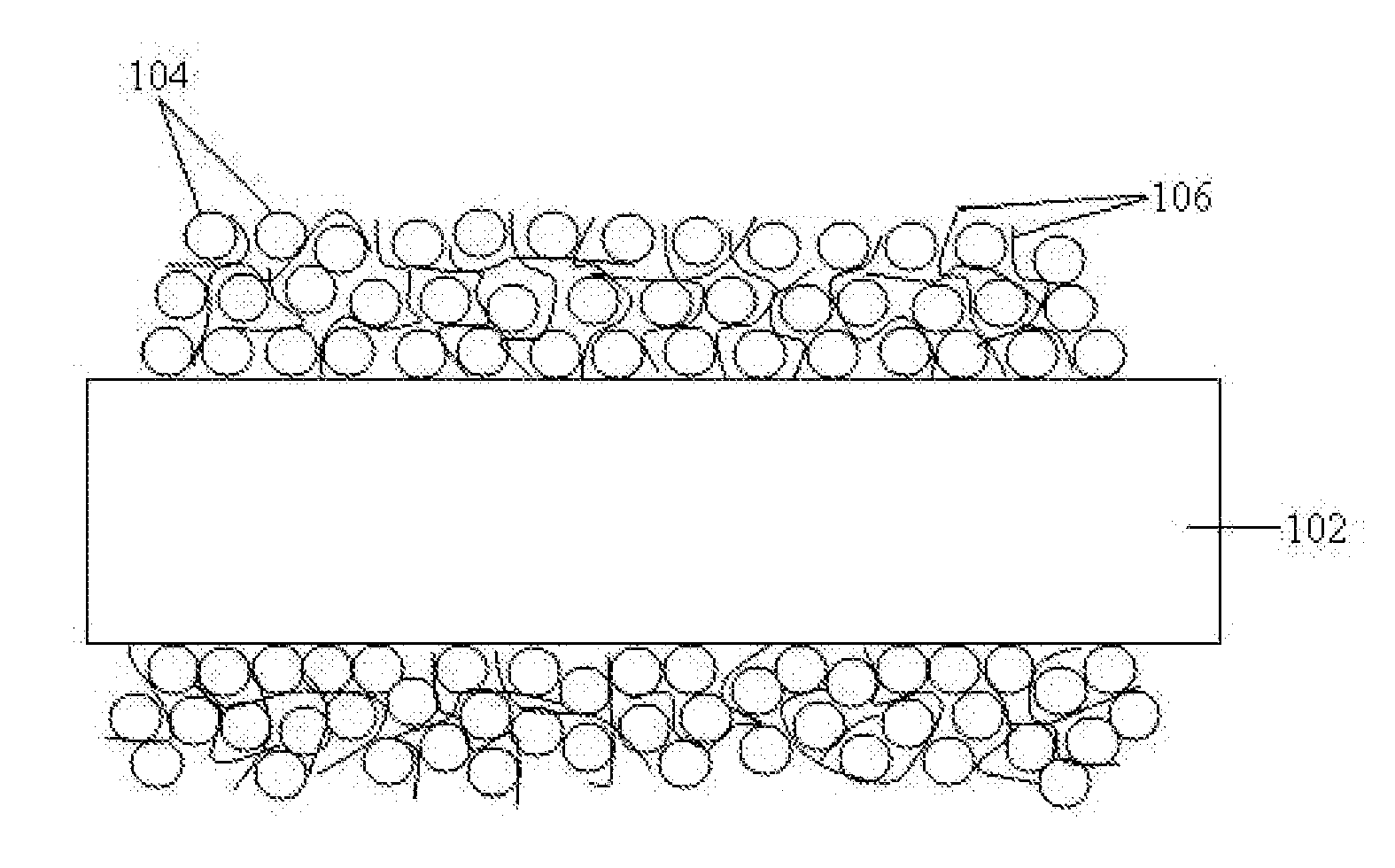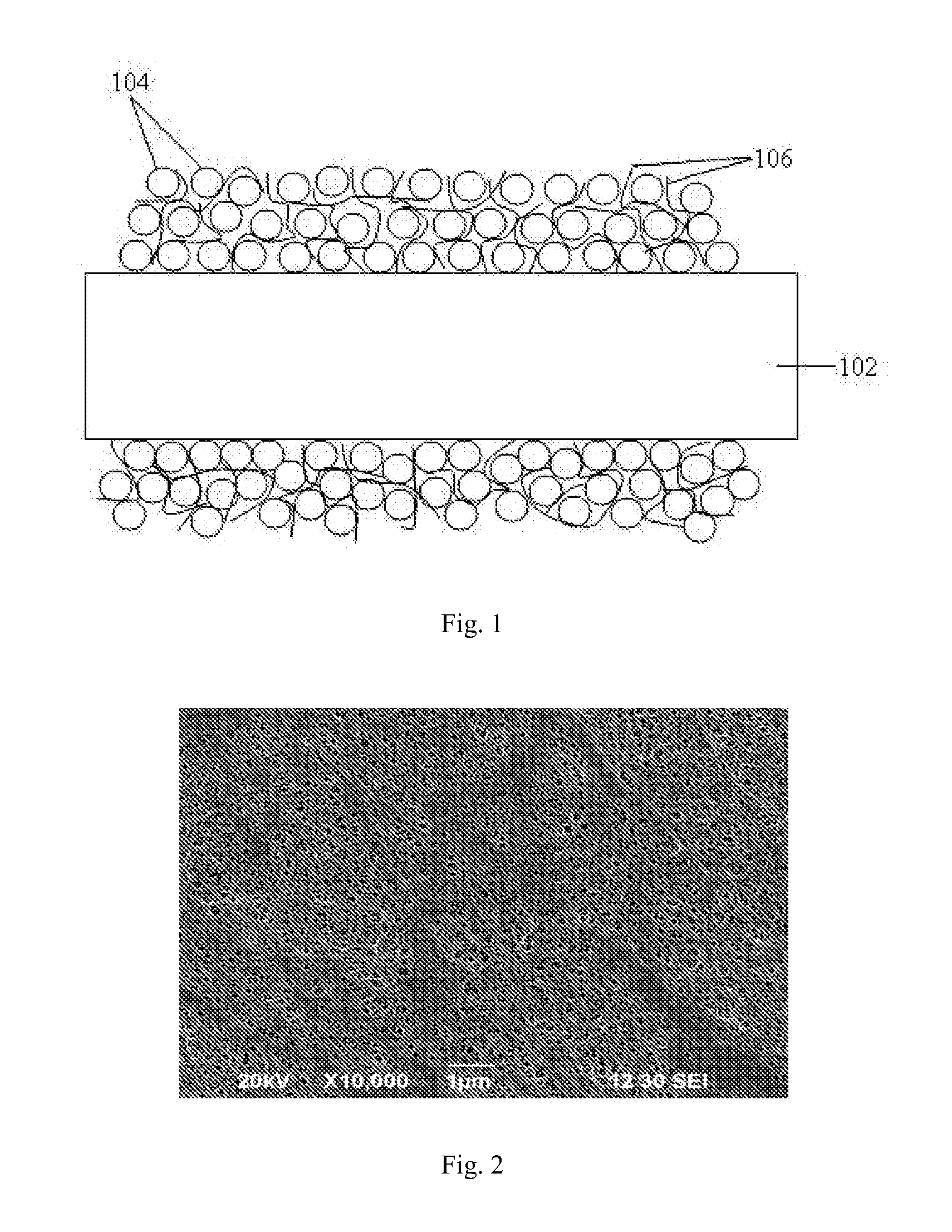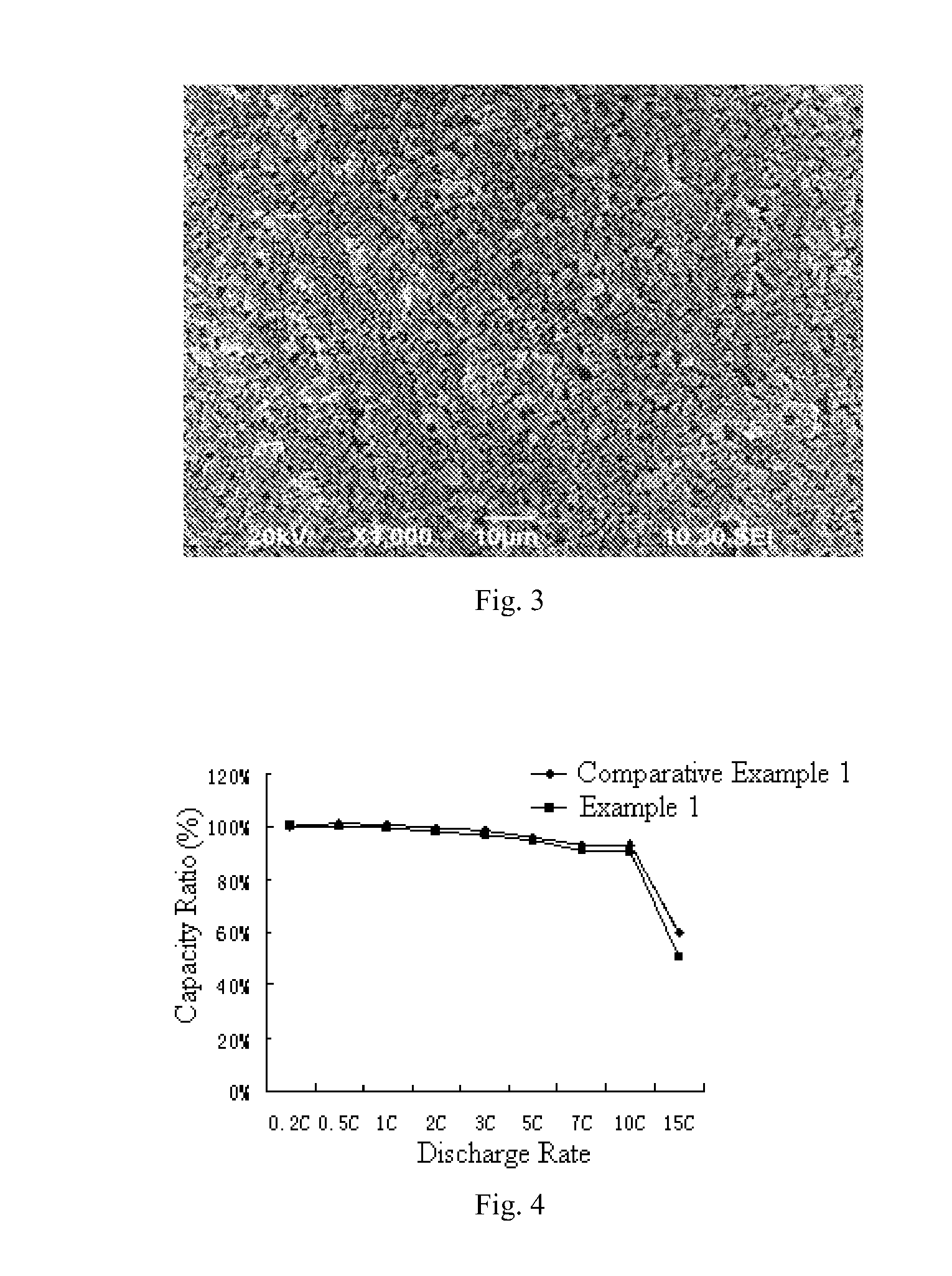Inorganic/organic composite porous separator and electrochemical device using the same
a composite porous separator and composite porous separator technology, applied in the field of electrochemical devices, can solve the problems of safety accidents, polyolefin separators, strict restrictions on battery safety,
- Summary
- Abstract
- Description
- Claims
- Application Information
AI Technical Summary
Benefits of technology
Problems solved by technology
Method used
Image
Examples
example 1
1-1. Preparation of Inorganic / Organic Composite Porous Separator (Al2O3 / PAA-PAAS)
[0064]50 wt % of Al2O3 powder was added to distilled water and stirred for an hour to make a solution. A solution containing 5% by solid weight of polyacrylic acid-sodium polyacrylate (PAA-PAAS) was added to the prepared solution containing 50 wt % Al2O3 and stirred for an hour to make a mixture. The mixture was grinded in a ball grinder for an hour. Solution containing 0.5% by solid weight of CMC was added to the grinded mixture and fully stirred for an hour to make slurry. The slurry was coated on one side of a polythene micropore membrane having porosity of 45% and thickness of 20 μm via coating machine. The thickness of the coating layer is 5 μm. The slurry then was evenly coated on the other side of the polythene micropore membrane. The thickness of the coating layer is 5 μm, so as to obtain a composite porous separator having a total thickness of 30 μm. Test the prepared composite porous separator...
example 2
2-1. Preparation of Inorganic / Organic Composite Porous Separator (Al2O3 / PAA-PAAS / CR)
[0068]50 wt % of Al2O3 powder was added to distilled water and stirred for an hour to make a solution. A solution containing 5% by solid weight of polyacrylic acid-sodium polyacrylate and 3% by solid weight of water-based silane coupling agent (3-glycidoxypropyltrimethoxysilane) was added and stirred for an hour to make a mixture. The mixture was grinded in the ball grinder for an hour. Solution containing 1.0% by solid weight of CMC was added to the grinded mixture and stirred for an hour to make slurry. After the polypropylene micropore film was treated via corona treatment or other surface treatment methods which can improve surface tension of the film, the slurry was evenly coated on one side of a polythene porous membrane having a porosity of 45% and a thickness of 20 μm via a coating machine. The thickness of the coating layer is 5 μm. The slurry was evenly coated on the other side of the polyt...
example 3
3-1. Preparation of Inorganic / Organic Composite Porous Separator (SiO2 / Al2O3 / PAA-PAAS / CR)
[0070]40 wt % of Al2O3 powder and 10 wt % of SiO2 powder was added to distilled water and stirred for an hour to make a solution. A solution containing 5% by solid weight of polyacrylic acid-sodium polyacrylate and 3% by solid weight of silane coupling agent (3-glycidoxypropyltrimethoxysilane) was added to the prepared solution and stirred for an hour to make a mixture. The mixture was grinded in a ball grinder for an hour. Solution containing 0.5% by solid weight of CMC was added to the grinded mixture and stirred for an hour to make slurry. After the polypropylene micropore film was treated via corona treatment or other surface treatment methods which can improve surface tension of the film, the slurry was evenly coated on one side of a polythene porous membrane having porosity of 45% and thickness of 20 μm via a coating machine. The thickness of the coating layer is 5 μm. The slurry was evenl...
PUM
| Property | Measurement | Unit |
|---|---|---|
| decomposition temperature | aaaaa | aaaaa |
| porosity | aaaaa | aaaaa |
| diameter | aaaaa | aaaaa |
Abstract
Description
Claims
Application Information
 Login to View More
Login to View More - R&D
- Intellectual Property
- Life Sciences
- Materials
- Tech Scout
- Unparalleled Data Quality
- Higher Quality Content
- 60% Fewer Hallucinations
Browse by: Latest US Patents, China's latest patents, Technical Efficacy Thesaurus, Application Domain, Technology Topic, Popular Technical Reports.
© 2025 PatSnap. All rights reserved.Legal|Privacy policy|Modern Slavery Act Transparency Statement|Sitemap|About US| Contact US: help@patsnap.com



